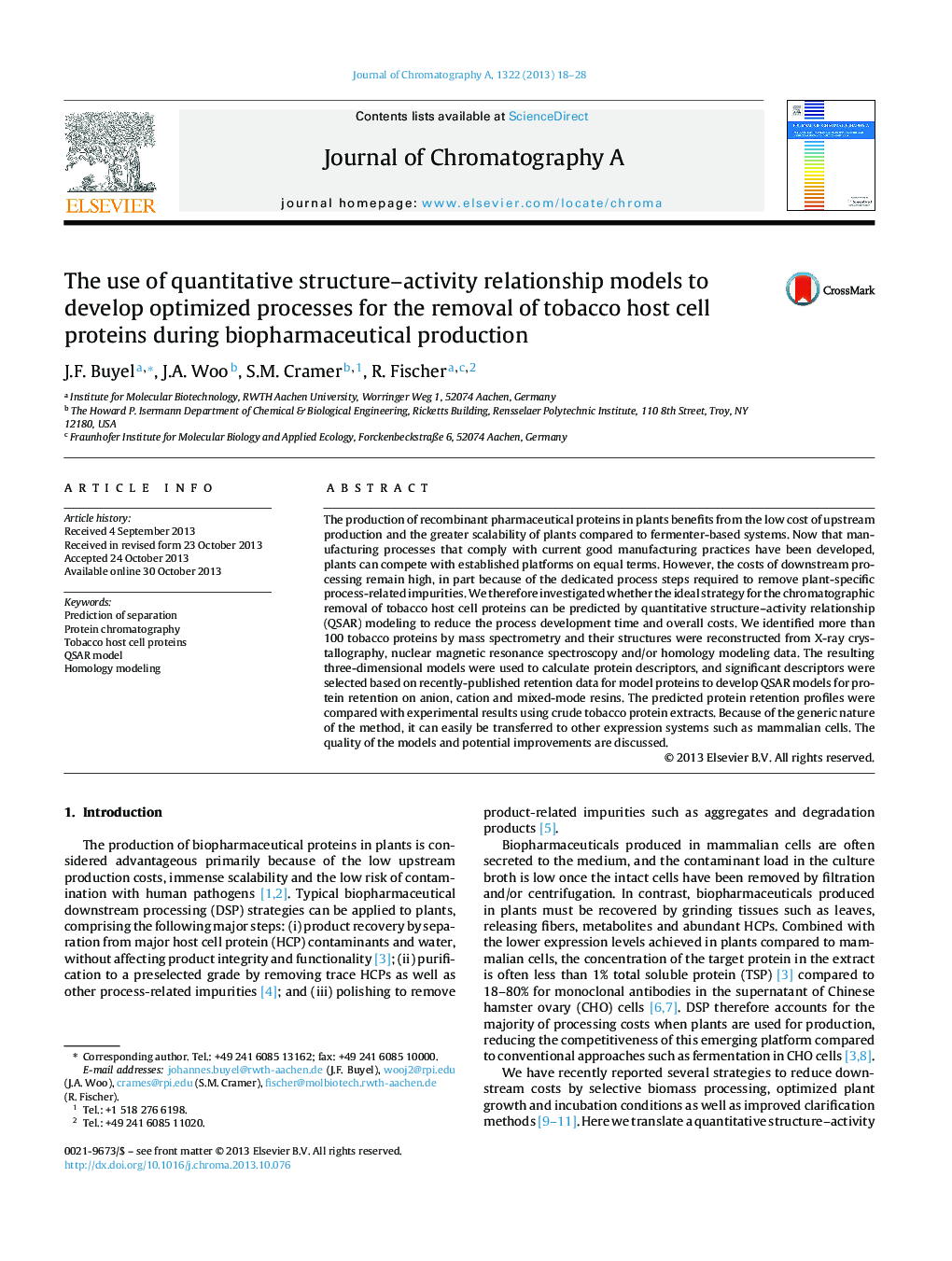| Article ID | Journal | Published Year | Pages | File Type |
|---|---|---|---|---|
| 1201046 | Journal of Chromatography A | 2013 | 11 Pages |
•We use QSAR models to predict chromatographic separation of tobacco proteins.•We identify, quantitate and model >100 host cell proteins of tobacco.•Predications and experimental data for crude protein mixtures matched well.•Separation on mixed-mode resins was hard to predict.•Oligomerization of proteins can be a limiting factor for prediction accuracy.
The production of recombinant pharmaceutical proteins in plants benefits from the low cost of upstream production and the greater scalability of plants compared to fermenter-based systems. Now that manufacturing processes that comply with current good manufacturing practices have been developed, plants can compete with established platforms on equal terms. However, the costs of downstream processing remain high, in part because of the dedicated process steps required to remove plant-specific process-related impurities. We therefore investigated whether the ideal strategy for the chromatographic removal of tobacco host cell proteins can be predicted by quantitative structure–activity relationship (QSAR) modeling to reduce the process development time and overall costs. We identified more than 100 tobacco proteins by mass spectrometry and their structures were reconstructed from X-ray crystallography, nuclear magnetic resonance spectroscopy and/or homology modeling data. The resulting three-dimensional models were used to calculate protein descriptors, and significant descriptors were selected based on recently-published retention data for model proteins to develop QSAR models for protein retention on anion, cation and mixed-mode resins. The predicted protein retention profiles were compared with experimental results using crude tobacco protein extracts. Because of the generic nature of the method, it can easily be transferred to other expression systems such as mammalian cells. The quality of the models and potential improvements are discussed.
